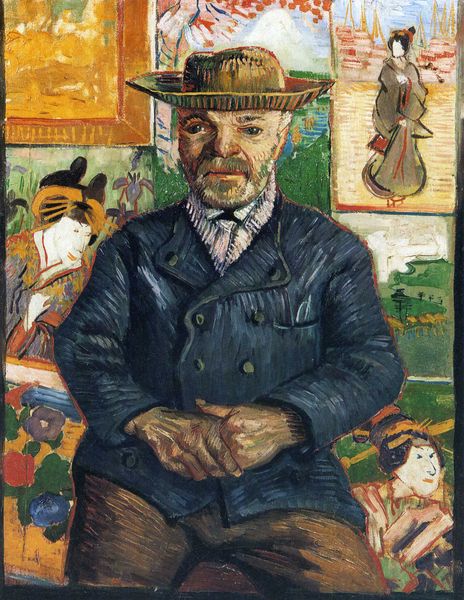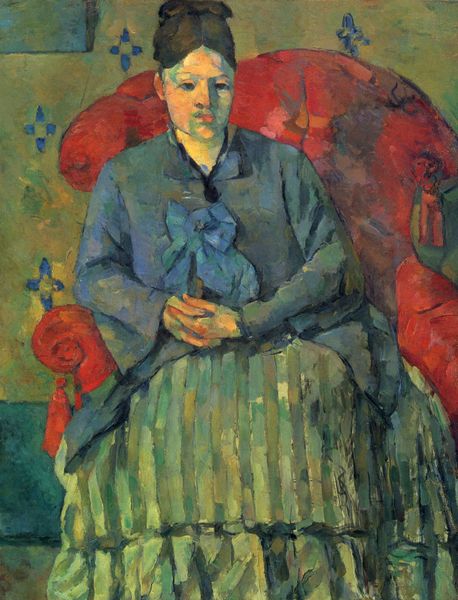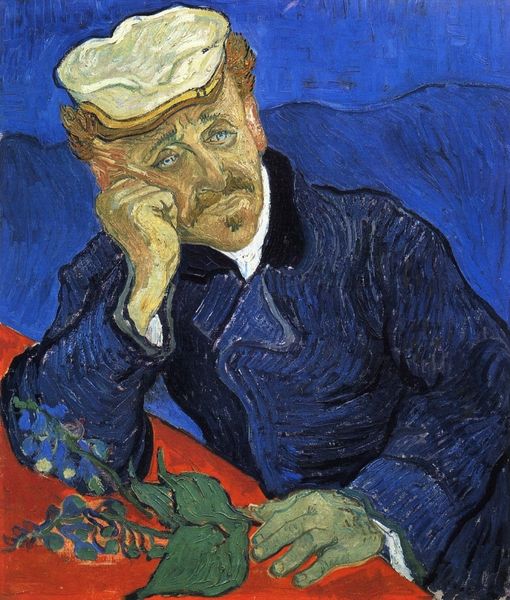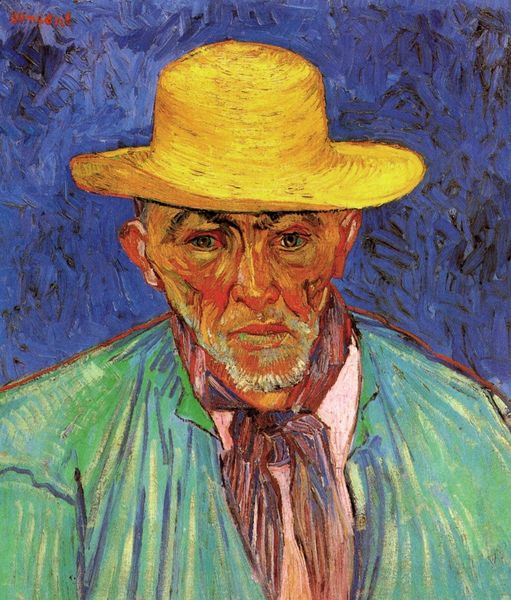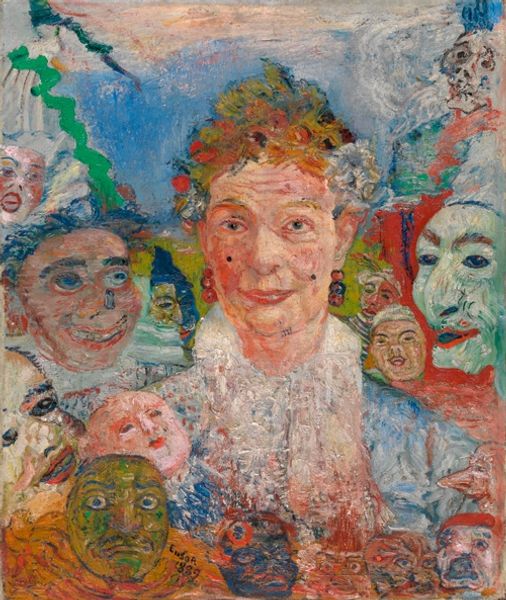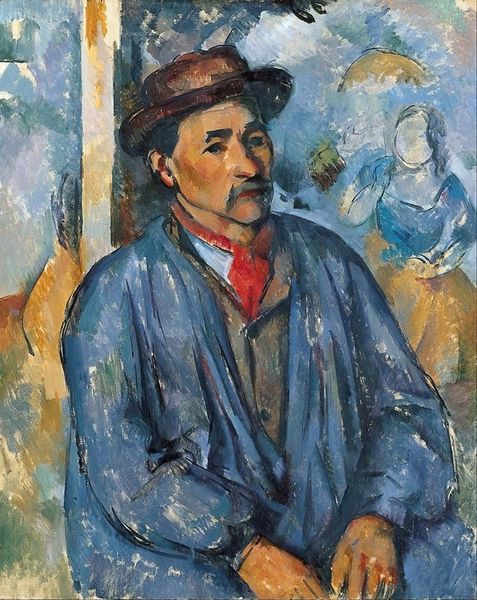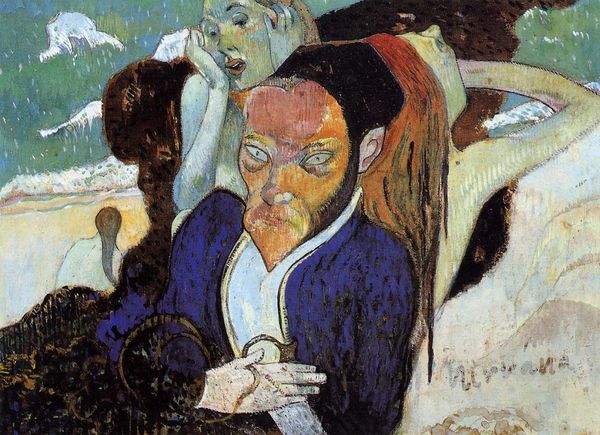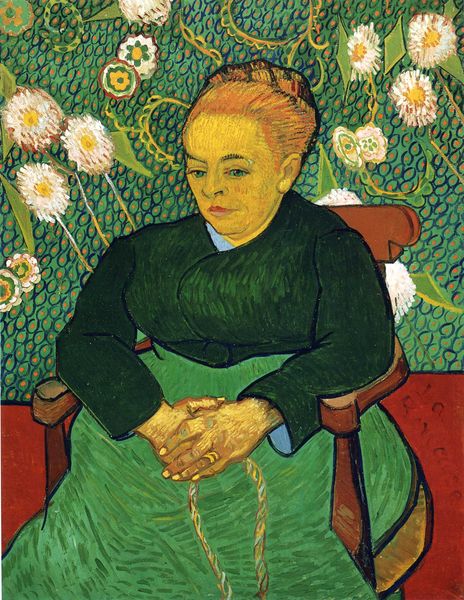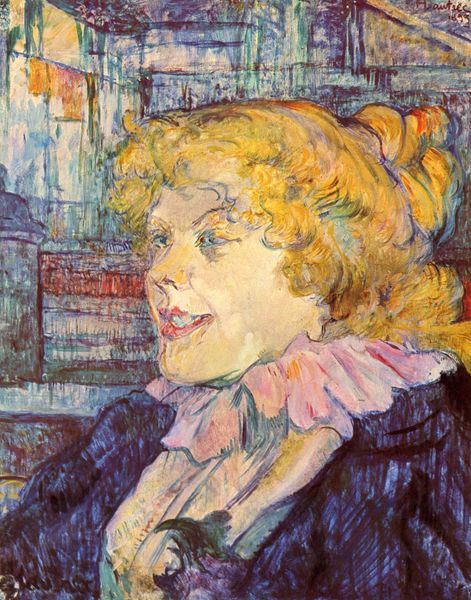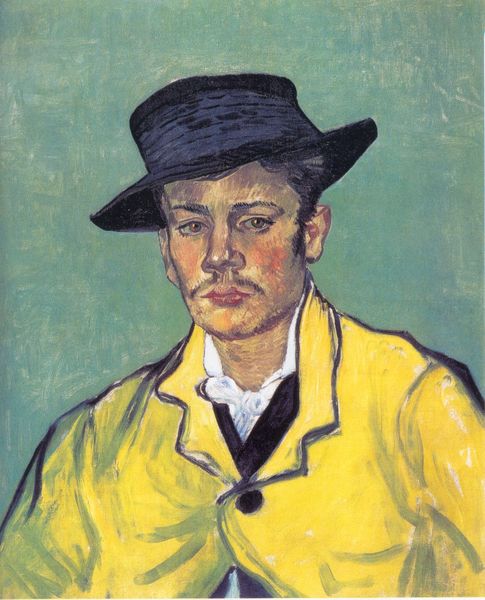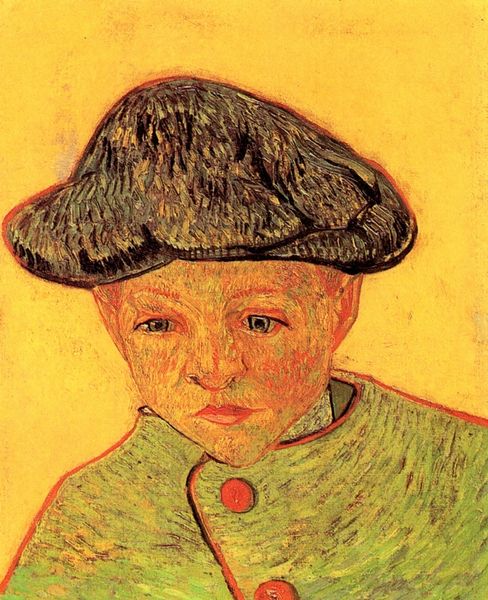
painting, oil-paint
#
portrait
#
painting
#
oil-paint
#
figuration
#
oil painting
#
japonisme
#
post-impressionism
Dimensions: 65 x 51 cm
Copyright: Public domain
What makes a good portrait? Is it likeness? Technique? Or is it the artist's ability to capture the spirit, essence, and personality of their sitter? 👇 Vincent Van Gogh's 'Portrait of Père Tanguy' (1888) is a lively and characterful representation of Julien Tanguy, a French art dealer who exhibited and sold the painter's works. Tanguy was an enthusiastic supporter of Post-Impressionism and counted several of the most famous Post-Impressionist painters as his close friends. He also collected Japanese prints – in Van Gogh's portrait, Tanguy is depicted against a background of colourful East Asian art. 🖼️ This work exemplifies Van Gogh's fascination with Japanese art, especially ukiyo-e (woodblock) prints. He has depicted several iconic Japanese motifs, from cherry blossom to Kabuki actors and the inspiring presence of Mount Fuji. Japanese designs were immensely popular in the West during the second half of the nineteenth century. This craze was known as 'Japonisme'. Can you think of any other Van Gogh paintings that are reminiscent of Japanese tradition? 🌸 In this portrait, painted less than two years before the artist's death in 1890, Van Gogh uses his signature blocky brushstrokes and vivid colour palette. The effect is energetic and full of life. The figure of Tanguy looks out to the viewer with a friendly expression. He sits proudly at the centre of the composition. What has Van Gogh told us about Tanguy's personality? 💭 Editor: Lucy Jude Grantham
Comments
bensiran 6 months ago
⋮
Indeed, form comes first. Always!! I mean in visual arts the intent of the artist matters. Yet, the composition, form, lines and their correlation matters more
Join the conversation
Join millions of artists and users on Artera today and experience the ultimate creative platform.
